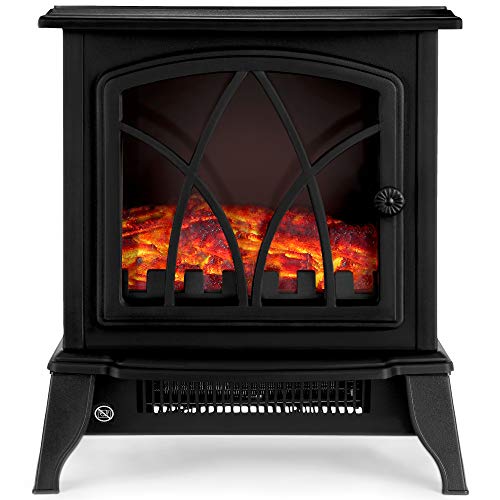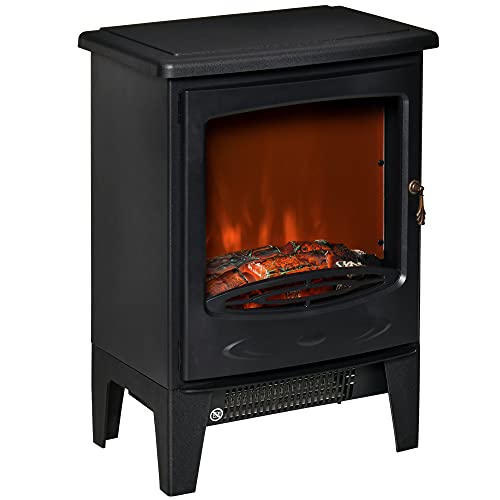The Most Significant Issue With Electric Heater And What You Can Do To…
페이지 정보

본문
 What You Need to Know About an Electric Heater
What You Need to Know About an Electric Heaterelectric heater stove heaters can be used to provide warmth quickly when required. They are usually designed for a certain size of room and come with features like thermostats, overheat switch, and timers.
 electric log effect stoves fires log Burner effect; images.google.com.gt, heaters convert electrical energy into joule heating. The heating element uses nichrome wire supported by ceramic insulation.
electric log effect stoves fires log Burner effect; images.google.com.gt, heaters convert electrical energy into joule heating. The heating element uses nichrome wire supported by ceramic insulation.Resistor
The resistor is an electrical element that hinders the flow of current in the circuit by reducing its voltage and absorbing some of it as heat. It converts electrical energy into thermal energy, and wasting only a fraction of a Watt. This process is present in many electrical light bulbs and heating elements.
The resistance in the resistor is determined by its thickness, material and other properties. It is important to remember that the higher the resistance's resistance, the greater energy it can dissipate. This is due to the fact that higher currents lead to more electrons within the resistor and more electrons equate to more collisions between them. The higher the temperature, more collisions will occur.
Resistors have a maximum power level they can safely dissipate. It is typically between 1/8W (0.125W), and 1W. Resistors with a higher power rating are sometimes referred to as "power resistors," and can be distinguished by their larger package size. The maximum power rating of a particular resistor can be determined from the packaging it is packaged in or by comparing its physical dimension against other resistors with an established power rating.
electric stove heater reviews heaters are a particular type of power resistor made to convert electricity into heat. They can generate convective heat or radiant heat by emitting infrared rays. They are often used in conjunction with fans to increase the heating efficiency.
If the maximum power rating of a resistor is exceeded, it will begin to heat up. This could cause damage to other components. In extreme situations it could even reach a point of self-ignition and cause an explosion. To avoid this from happening, a limiting resistance should be installed in the circuit.
Heater resistors come with a color code that indicates their value along with other information such a manufacturing accuracy and temperature coefficient. A six-banded resistance, as an instance, has five bands to indicate its digits. The sixth band will provide the multiplier and tolerance. There are many online calculators that you can use to calculate the value of your own resistor.
Coil
electric fireplace stove heater heating coils are the heart of any appliance powered by electricity that makes use of heat to warm liquids or objects. They convert electricity into heat using a process called conduction, and they can be formed into various shapes depending on the application. Heating coils made of electric are capable of producing a large amount of heat in a short amount of time and are therefore suitable for applications that require fast temperatures or high levels of thermal efficiency.
The core of an electric heating coil is a tightly wound system composed of metal wires. This tightly packed structure allows for the maximum number wires to be able to fit in the space, thereby increasing conductivity. The coil can be protected in a variety ways, based on the application. Insulation for electric heaters that is used for liquid immersion can be made of a non-flammable polyvinylchloride (PVC), polyester or polyimide. A coil used in cryogenics would typically be insulated using molybdenum diilicide.
In addition to protecting against the elements, these materials also provide resistance to corrosion and oxidation, making them ideal for many industrial applications. Stainless steel is the most common element for a heater coil, but nickel-chrome and iron-chromium-aluminum alloys are also commonly used. These alloys offer a great combination of cost, corrosion resistance and oxidation resistance.
Metals in a heating element are exposed to extreme temperatures and harsh environments. They must be protected. This protection includes coatings and sealants, improved drainage and ventilation, regular maintenance, and inspections. Moisture intrusion is a different issue which needs to be taken care of. It can cause damage to heating system's internal components and decrease its life span.
Coils can also be used in other devices, such as ovens, furnaces, and water tanks. They can be shaped into a variety of shapes to fit the application and are usually printed on substrates such as aluminum 6061-T6, muscovite or phlogopite mica sheets, or conductive plastic. They can be coated in a variety of materials such as silver, nickel and gold, to improve their appearance.
Thermostat
Although you may not think about it often, your thermostat is a very important element of your home's comfort system. The thermostat's primary function is to turn on and off the heater, so that you can keep the temperature you want to maintain. It also has the ability to adjust the temperature according to your routine which is a major benefit for those who have unpredictable schedules.
The most commonly used type of thermostat is the electronic digital type which you can program with an app on your smartphone or a computer interface. Many newer models even come with a learning feature that automatically adjusts to your personal preferences, so you'll never need to think about when you should be home for dinner.
In the older thermostats that were not digital, the electrical circuit would be controlled by bimetal coils or a metal band, which would expand or contract based on the temperature. When the strip expanded or contracted it was tipped by a mercury switch, activating the relay which switched on the heating. When the strip was cool it swung backwards, and snapped away from its initial position. This turned off the heating.
Modern electric thermostats are more precise than electromechanical ones, which use the use of a temperature sensor and a tiny relay. It's easy to understand the mechanics of an electromechanical thermostat by examining its parts.
A thermometer coil with a mercury piece inside is one of the most essential components. When you turn the thermostat lever upwards or downwards the coil turns and tips the mercury switch in one direction or the other. If the mercury switch is tipped to the left, it will energize the relay and then turn on the heater.
However, as the room heats up, the mercury switches to right and cuts off the circuit which means that the heater is shut off. When the room cools down, the mercury returns back to its original position. The heater then switches on. If you continue to change the temperature on your electric thermostat, it could require overtime to keep up with your ever-changing preferences, which causes it to consume more energy than it needs to.
Timer
A wall heater timer is a convenient device that lets you plan your lighting and heating. It comes with a built-in clock that automatically turns on and off your heaters or lights according to the time you set. You can also save money on your energy bills by preventing excessive usage.
They are most commonly utilized in homes, but can also be found in industrial and commercial facilities. They provide convenience, energy efficiency and security by controlling the electrical circuits that are switched on and off. They can be utilized to control appliances such as lights, water pumps, and ovens. They are a great option for those who want to control electrical appliances without a computer or complex programming.
The plug of a timer switch onto an extension cord or outlet will allow you to set it. Then connect the appliance you wish to control. Based on the model, you can plug in multiple devices at a time. Some models have a socket in the middle of the timer. While others have sockets on the sides or under it. You can choose between several plug-in switches including those which can be controlled with a smartphone or tablet.
The majority of mechanical timers have an hour and half-hour markings. They also have tiny teeth that you can pull outward to set the "ON" time and push backwards to set the "OFF" time. There are models with multiple sets that allow you to alter the time of on and off for different days of the week. Remember that mechanical timers may not always work correctly particularly if their internal clock is slightly off. If your timer does not turn on or off when it should examine the wiring for any issues and ensure that all pins are pressed in correctly. If you're still unable to get it to function, it's best electric stove heater to consult a professional for help. You can also replace the timer with a new one. You should also keep the timer in a safe place away from children and pets.
- 이전글7 Practical Tips For Making The Most Of Your Buy A Driving License A A1 A2 Without A Test 24.12.20
- 다음글10 Startups That'll Change The Midi Bunk Bed Industry For The Better 24.12.20
댓글목록
등록된 댓글이 없습니다.